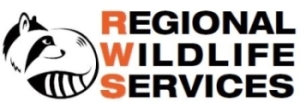In the Burlington and Oakville area there are many pests that can create a nuisance in your home and property. These animals will often try to break into your attic, basement or deck space in search of a dark, quiet and safe place to live and have babies.
Though there are a number of different pests that you might find in and around your home, there are 3 that are usually the most common in the Burlington and Oakville area.
Top pests found in your attic
In Burlington, Oakville, Milton and all of Halton Region we’re your Regional Wildlife removal experts. Locally owner-operated and experts at getting rid of these nuisance animals from your attic!
1. Squirrels
Squirrels mate and have babies twice a year, so they are most likely looking for a safe space to create their den if you’ve found them in your home. While they are small pests, they are very destructive ones. Squirrels in your attic can tear apart insulation, chew wood beams, destroy wiring and leave a huge mess. Not only is this unpleasant to have to clean up, it can actually become a fire hazard as well.
If you’ve found telltale signs in your attic, under your deck or in a garage it’s not as easy as just setting a trap and removing them. If a squirrel has created a den and had babies you need to find that nest before taking any removal steps. While setting a trap or just blocking off their re-entry might be the first thought that enters your mind, if they have babies in the space they’ve infiltrated, you will be leaving those babies stuck inside without a way to get food. This can lead to them starving to death, which can end up being more of a hassle than just removing them would be.
2. Raccoons
Raccoons are quite a bit larger than squirrels so they have a harder time sneaking into your attic, but they definitely can! Cracks around windows or vents, an uncovered chimney and holes in your soffit or around your roof line are all prime targets for a raccoon looking for a safe space to nest.
Since raccoons are a fairly large animal, you may hear them thumping or chewing on wood and wires in your attic. A raccoon’s feces is very toxic to humans, so these are not pests that you want to leave alone.
Raccoons only have babies once a year, but the window of possibility for when the babies could be born is fairly large. If you discover a raccoon in your attic between May and August, there is a possibility that you will also find a nest with babies. As with squirrels, you have to be careful that you do not prevent re-entry to a new mom or you could end up with a nest of starved babies in your attic.
3. Flying pests like birds and bats
Bats and birds are not nearly as destructive as other pests that you could find in your attic, but you still want to get them out as soon as possible. These pests are extremely small and adaptive so they can get in through very small holes around your roof or soffits. Bats can be harmful if allowed to remain in your attic. They can carry rabies and their guano (urine and droppings) can be extremely toxic.
The easiest way to remove flying pests from your attic is to install one-way doors on their entrance holes that allow them to leave but not get back in. However, one-way doors are not allowed to be installed until after August 1, since bat babies are solely dependent on their mother’s ability to bring food back into the nest.
Honourable mention: Rodents like rats or mice
Rodents are usually quite small so they can sneak in and out of your home without you even noticing. They will most often enter your home looking for food or a place to nest and have babies. If their goal is to have babies, your tiny critter problem will turn into a big infestation in no time. Anytime you spot mouse droppings or chewed up food packaging, act fast to get them out of your home.
If there’s noise in the attic, it’s one of these animals!
If you live in Burlington or Oakville and hear noises in the attic suspecting it’s wildlife – you’re probably right! The probability it’s either squirrels, raccoons, birds, bats or rodents is extremely high. Want to prevent damage and contamination? Call your local Regional Wildlife Removal Experts now!





